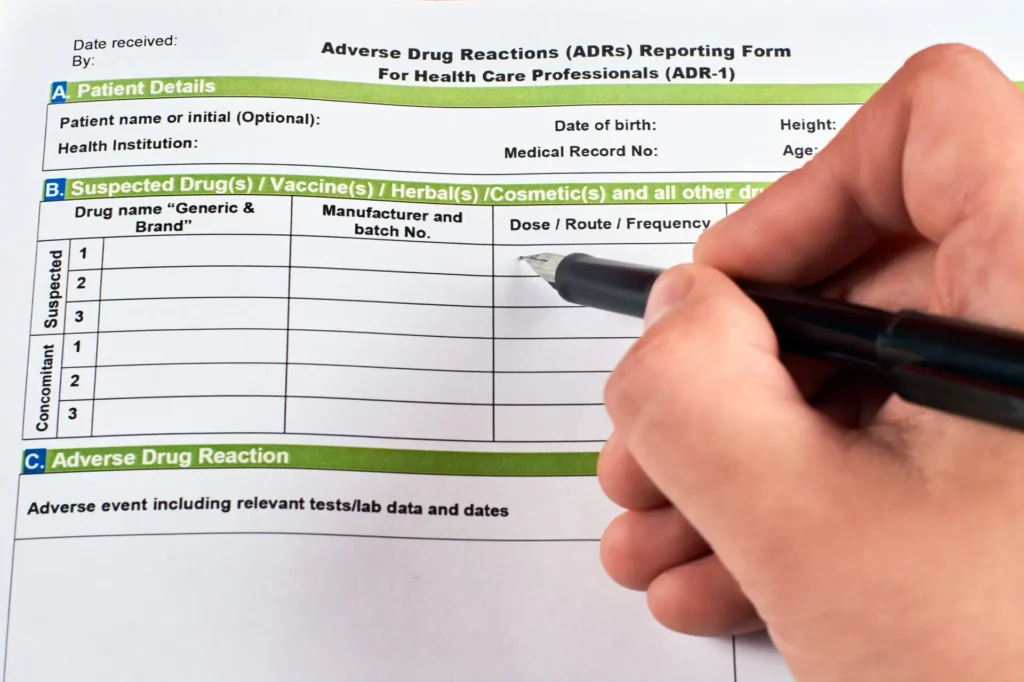Adverse vs. Averse
Adverse vs. averse stands out as a classic example in the rich tapestry of the English language, where nuanced differences between words often lead to common confusion. Though similar in spelling and sound, these adjectives diverge in meaning, each painting a distinct picture within the linguistic landscape.
“Adverse” conjures harm, difficulty, or unfavorableness scenarios, typically applied to situations or conditions. Conversely, “averse” indicates a strong disinclination or opposition, reflecting personal preference or sentiment. The mix-up between these terms can subtly alter the communication fabric, leading to misinterpretations or ambiguity.
This exploration seeks to unravel the threads that distinguish adverse vs. averse, clarifying their proper use to ensure that our expressions accurately reflect our intentions. By demystifying these terms, we aim to sharpen our communicative precision, enabling us to navigate the complexities of language with confidence and clarity.

Part 1: Understanding Adverse vs. Averse
Embarking on the journey to differentiate adverse vs. averse begins with a foundational understanding of their definitions, roles, and the contexts that call for their use. This section lays the groundwork for navigating their distinctions, guiding us toward their accurate application in our daily language.
Definitions and Roles
- Adverse: “Adverse” is an adjective that describes something harmful, unfavorable, or detrimental. It often refers to conditions, effects, or circumstances that pose obstacles or challenges rather than people’s feelings or attitudes.
Example: “Adverse weather conditions forced the cancellation of the outdoor event.” - Averse: Conversely, “averse” is used to express a strong feeling of opposition or reluctance. It describes a personal sentiment, indicating a degree of dislike or unwillingness towards a particular action, idea, or thing.
Example: “I am averse to working late hours, as it affects my work-life balance.”
Grammatical Rules and Usage Guidelines
Understanding when to use adverse vs. averse hinges on the context of the communication—the former relating to external conditions and the latter to personal feelings:
- Identifying the Subject: “Adverse” typically modifies nouns that are not people, such as “conditions,” “effects,” or “situations.” “Averse,” is used concerning people’s feelings or attitudes, often following the structure “person + be + averse to.”
- Contextual Clarity: The key to choosing between “adverse” and “averse” lies in whether the description pertains to unfavorable external circumstances or an individual’s internal sentiment of opposition or reluctance.
Contextual Application
The accurate deployment of adverse vs. averse enriches communication, allowing for clear expression of challenges posed by external conditions or personal inclinations:
- Describing Challenges and Risks: Use “adverse” when outlining obstacles, risks, or harmful impacts that arise from external factors.
- Expressing Personal Reluctance or Dislike: Reserve “averse” when it’s crucial to convey personal feelings of opposition or avoidance towards a specific action, idea, or scenario.
By establishing a solid foundation in the meanings and appropriate contexts for adverse vs. averse, we pave the way for their precise and practical use. This understanding not only aids in avoiding common errors but also empowers us to articulate distinctions between external adversities and personal aversions with greater clarity, whether in writing or speech.

Part 2: Using “Adverse”
“Adverse” illuminates situations or conditions fraught with difficulty or opposition, spotlighting external factors that may hinder or harm. Understanding how to apply “adverse correctly” enables us to precisely articulate challenges or unfavorable circumstances, enhancing our descriptive capabilities.
“Adverse” for Unfavorable Conditions
- Purpose and Application: Use “adverse” when describing situations, conditions, or effects that are harmful or create obstacles. It’s particularly relevant in contexts where external factors negatively impact outcomes or well-being.
Example: “The project faced adverse market conditions, significantly impacting its success.”
Common Contexts for “Adverse”
The application of “adverse” spans various domains, each requiring a clear communication of adverse external influences:
- Environmental and Weather Conditions: “Adverse” describes harsh or unfavorable weather conditions that affect events, activities, or health.
Example: “Adverse weather conditions, including heavy rain and strong winds, led to the postponement of the marathon.” - Health and Medical Scenarios: In medical contexts, “adverse” can refer to negative reactions or effects, such as those related to medication or treatments.
Example: “Patients should be aware of the potential adverse effects of the medication before beginning treatment.”

Part 3: Using “Averse”
Conversely, “averse” delves into personal sentiment, highlighting opposition or reluctance from an individual perspective. Mastery of “averse” empowers us to express personal preferences or dislikes accurately, fostering clear communication of subjective stances.
“Averse” for Dislike or Opposition
- Purpose and Application: Use “averse” to convey a strong disinclination or opposition towards something. It captures personal sentiments, making it suitable for expressing individual preferences, dislikes, or reluctance.
Example: “Despite the popularity of social media, she remains averse to sharing personal details online.”
Differentiating “Averse” from “Adverse”
Understanding when to employ adverse vs. averse is critical to accurately conveying personal feelings rather than external conditions:
- Personal Disinclination and Preferences: “Averse” is apt for situations where the emphasis is on an individual’s feelings or attitudes towards a specific action, idea, or object.
Example: “He is averse to taking risks, preferring a more cautious approach to investments.” - Expressions of Reluctance: Use “averse” to highlight a person’s reluctance or resistance to engage in particular behaviors or activities.
Example: “The company’s leadership is not averse to adopting new technologies, provided they demonstrably improve efficiency.”
Parts Two and Three explore the nuanced uses of adverse vs. averse, clarifying their application in describing external challenges or unfavorable conditions and personal opposition or dislikes, respectively. By distinguishing between these contexts, speakers and writers can select the adjective that best fits their intended message, ensuring that their communication is accurate and effective. Mastery of adverse vs. averse enhances the clarity of our expressions and enriches our ability to confidently navigate the complexities of English.

Part 4: Common Mistakes and How to Avoid Them
The similarity in sound and spelling between adverse vs. averse can lead to mix-ups, even among careful communicators. These errors muddle the intended message and alter the perception of a situation or stance. Recognizing and avoiding these common mistakes is crucial for maintaining clarity and precision in communication.
Confusing “Adverse” and “Averse”
One frequent error involves using “adverse” when “averse” is intended, or vice versa, leading to confusion about whether one is discussing external challenges or personal dispositions.
- Strategy for Avoidance: Anchor your usage in the core meanings of each word. Remember that “adverse” relates to unfavorable conditions or effects external to oneself, while “averse” deals with a personal feeling of opposition or reluctance. A mental check of “external vs. internal” can guide correct usage.
Misapplying “Averse” in Place of “Adverse”
Mistakenly using “averse” in contexts meant to describe unfavorable conditions or outcomes illustrates another common pitfall, diluting the effectiveness of the description.
- Clarification Tip: Before choosing between “adverse” and “averse,” consider if you’re describing an external condition affecting a situation (use “adverse”) or an individual’s sentiment (use “averse”).
Tips for Correct Usage
Effective communication demands precision, particularly regarding words as easily confounded as adverse vs. averse.
- Contextual Clarity: Pay close attention to the context of your statement—whether you’re describing an external situation or expressing a personal preference—to guide your choice.
- Practice and Review: Incorporate adverse vs. averse into writing exercises, focusing on their distinct applications. Regular training, coupled with review, reinforces correct usage.
- Seek Feedback: Don’t hesitate to ask for input on using adverse vs. averse. Feedback from others can provide valuable insights and help solidify your understanding.
Conclusion
The journey through the distinct landscapes of adverse vs. averse culminates in a clearer understanding of how to accurately convey challenges posed by external conditions or articulate personal preferences and oppositions. Though closely aligned phonetically, these adjectives serve different communicative purposes, underscoring the importance of precision in language.
As we’ve explored, “adverse” is your ally in discussing unfavorable external conditions, while “averse” is the term for expressing personal disinclination. Mastery of these terms bolsters the clarity and effectiveness of our communication and enhances our engagement with the subtleties of English.
Embracing Linguistic Precision
Let the distinctions between adverse vs. averse inspire a commitment to linguistic precision, empowering you to navigate the intricacies of language confidently. As we refine our communicative skills, correctly applying these terms enriches our ability to accurately express complex ideas and sentiments.
The Path Forward
Challenge yourself to apply adverse vs. averse correctly in your communications, mindful of the nuances that distinguish their usage. Explore further, question assumptions, and celebrate the depth and precision that careful word choice brings to your interactions.
If you’ve found this guide helpful, consider sharing it with others who might benefit from a deeper understanding of “adverse” and “averse.” Let’s continue refining our language command, enhancing our ability to communicate precisely and clearly.

Further Exploration
For those eager to dive deeper into the intricacies of English, countless resources await. From comprehensive grammar guides to interactive language learning platforms, the tools at your disposal are more accessible than ever. Engage with these materials, challenge yourself with new exercises, and remain curious and open to discovery. We offer a line of comprehensive grammar and punctuation courses and feature a mastery quiz bundle to cement your further mastery of grammar and punctuation. Feel free to access the endorsed resources below to enhance your learning experience.





